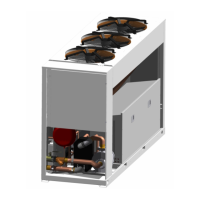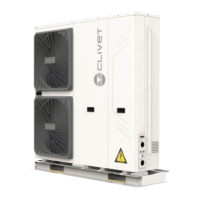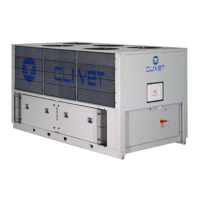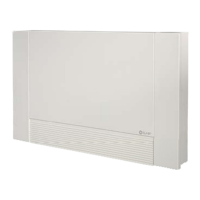15
®
Residual Risks
IDENTIFICATION OF RISK
Greatest physical and chemical dangers:
- Thermal decomposition in toxic and corrosive products
FIRST-AID MEASURES
General information:
- Inhalation: Carry the victim into the open air. Resort to oxygen or artificial respiration if necessary.
- Contact with skin: Frostbite must be treated in the same way as burns.
- Contact with the eyes: Immediate rinsing in abundant water. If irritation should continue, consult an ophthalmologist.
- Medical instructions: Do not administer catecholamines (due to the cardiac sensitisation caused by the product).
FIRE PREVENTION MEASURES
- Specific dangers: Thermal decomposition into toxic and corrosive products. Hydrofluoric acid. Carbon monoxides.
- Specific means of intervention: Cool containers/cisterns with jets of water. Prevent any sparks or flames.
- Do NOT smoke.
- Special protection systems for fire-fighting squads: Carry breathing apparatus and wear protective clothing.
MEASURES TO TAKE IN CASE OF ACCIDENTAL SPILLAGE
- Individual precautions: Avoid contact with the skin, eyes and inhalation of vapours. Use personal protection devices.
- In an enclosed space: ventilate or use breathing apparatus (risk of suffocation). NO SMOKING ALLOWED.
- Precautions for environmental protection: Minimise the amount of waste deposited in the environment.
MANIPULATION AND STORAGE
- Technical measures/precautions: Form of storage and manipulation applicable to the products: PRESSURIZED GAS. Ensure
adequate ventilation and evacuation for the level of equipment.
- Advice for use: Prevent sparks and contact with hot surfaces. DO NOT SMOKE.
- Technical measures/Storage procedures: Store at room temperature in the original container. Keep away from flames, hot surfaces
and sparks. Store in a cool, well-ventilated place. Protect full containers from sources of heat to avoid excessive pressures.
- Recommended: Ordinary steel.
- Avoid: Alloy containing more than 2% magnesium. Plastics.
CONTROL OF INDIVIDUAL EXPOSURE/PROTECTION
- Precautionary measures to be taken: Ensure a sufficient exchange of air and/or suction in workplaces.
- Control parameters.
Exposure limits: There is no F-USA limit value
Forane 134a Elf recommended limit value: VME=1000ppm
Forane 32 Elf recommended limit value: VME=1000ppm
Forane 125 Elf recommended limit value: VME=1000ppm
- Protections:
Respiratory protection: In case of insufficient ventilation, carry suitable breathing apparatus.
Protection for the hands: Gloves
Protection for the eyes: Protective eyewear.
PHYSICAL AND CHEMICAL PROPERTIES
- Physical state (20°C): liquid gas
- Colour: colourless
- Smell: Slightly similar to ether; pH: not applicable.
- Boiling point/interval: -42,4 °C
- Melting point/interval: Not inflammable in test conditions
- Vapour pressure: (25°C): 1.13 Mpa (11,3 bar) a (50°C): 2.11 Mpa (21,1 bar) a (70°C): 3.26 Mpa (32,6 bar)
- Vapour density: At boiling point 4,54 kg/m3
- Density: (25°C) 1133 kg/m3 a (50°C) 1004 kg/m3 a (70°C) 861 kg/m3
STABILITY AND REACTIVITY
- Conditions to avoid: Avoid contact with flames and red-hot metal surfaces.
- Dangerous decomposition products: Thermal decomposition into toxic and corrosive products: Toxic fluorinates Hydrogen fluoride
(hydrofluoric acid) .
- Further information: Product stable in normal storage and handling conditions.
TOXICOLOGICAL INFORMATION
- Inhalation: Practically non-toxic in experiments conducted on animals Forane 134a, 32, 125. No rat mortality at 500000 ppm/4h. As
with other volatile aliphatic halogenated compounds, with the accumulation of vapours and/or the inhalation of large quantities, the
product can cause: loss of consciousness and heart problems aggravated by stress and lack of oxygen; risk of death.
- Contact with skin: Frostbite possible from splashes of liquefied gas.
- Chronic toxicity: Studies on extended inhalation in animals have not highlighted any sub-chronic toxic effect (rat/3 months/
Inhalation:50000ppm).
- Specific effects: Genotoxicity, according to experimental data available Forane 134a, 32, 125 NOT Genotoxic.
- Carcinogenic effect: Forane 134a experiments on animals have not demonstrated a clear cancerogenous effect (rat /oral inhalation)
- Toxicity for reproduction: Foetal development Forane 134a, 32, 125. according to available data there are no toxic effects for foetal
development. Fertility, according to available data for animals: Forane 134a no effect on fertility (mice/inhalation) .
ECOLOGICAL INFORMATION
Forane 32
- Durability/degradability: Not easily biodegradable in water: 5% after 28d
- Bioaccumulation: Practically non-absorbable by biological organisms log pow 0,21
Forane 125
- Mobility: Rapid evaporation t ½ life 3,2 h (estimated)
- Durability/degradability: Not easily biodegradable in water: 5% after 28 days. In the atmosphere degradation at rate of 1/2 life in 28,3

